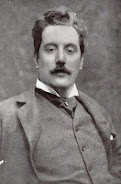Discounting his participation as a viola player in the court orchestra of the Elector of Cologne, in 1783, when he was thirteen, Ludwig van Beethoven never worked full-time for a ruler, or under the wing of a nobleman, or a religious institution. Hence, then, his output of sacred music is relatively sparse. Apart from an oratorio in German, Christ on the Mount of Olives, of 1803, only two complete masses make up his religious production: the Mass in C major, of 1807, and the Missa Solemnis in D major of 1824, written at the same time as the Ninth Symphony.
With the help of his friends
Although he did not rely on a particular patronage, Beethoven did not lack noble friends. And although he never asked for it, in 1809, three of them undertook to grant Beethoven an annual stipend of 4,000 guilders, with the sole requirement that he remain in Vienna, dedicated to composing. Some of these enviable relationships had begun at the level of master and pupil. This is the case of Emperor Franz I's brother, Archduke Rudolph Johann Joseph Rainer, who, after behaving as a diligent pupil, later became Beethoven's greatest benefactor, making the master the first independent artist and composer in history.
 |
| Archduke Rudolph (1788 - 1831) |
In 1819, the archduke above was distinguished as the next archbishop of Olmütz, a city in Moravia, a position he was to assume in March of the following year. The master had one year to write the work of homage to his generous benefactor and admirer. A mass, a great mass, seemed to him the appropriate offering for such a solemn occasion.
Hummel enters
By this time, Beethoven was fifty years old. He was alone, deaf, and living in supplication for the affection of his nephew Karl, whose tutor he was. To make matters worse, he was engaged by the London Philharmonic Society to compose a new symphony (the Ninth). So the Great Mass was not completed for the occasion. The archbishop had to be satisfied with a mass written by Hummel.
We do not know if the maestro apologized. What is certain is that he continued to work, unperturbed, on the Ninth, the last three sonatas, and the last quartets, along with the mass.
The work was not completed until early 1823. Finally, the première took place on May 7, 1824, in St. Petersburg.
Mass for Soloists, Chorus, and Orchestra in D Major, Missa Solemnis, Op. 123
Intended to arouse and instill religious feelings in the performers and the audience, Beethoven combined the Catholic liturgy with great dramatic expressiveness, making it "the greatest production ever to come out of my mind," in Beethoven's own words.
The complete Mass with the usual sections of the Catholic liturgy: Kyrie, Gloria, Credo, Sanctus, Benedictus, and Agnus dei, lasts about an hour and a half. Presented here are the Sanctus and Benedictus pieces, the latter, being its most moving moment, according to scholars.
The performance is by the Royal Philharmonic Orchestra and the London Philharmonic Chorus with tenor, bass, soprano, and alto soloists, all conducted by Sir Gilbert Levine.

















